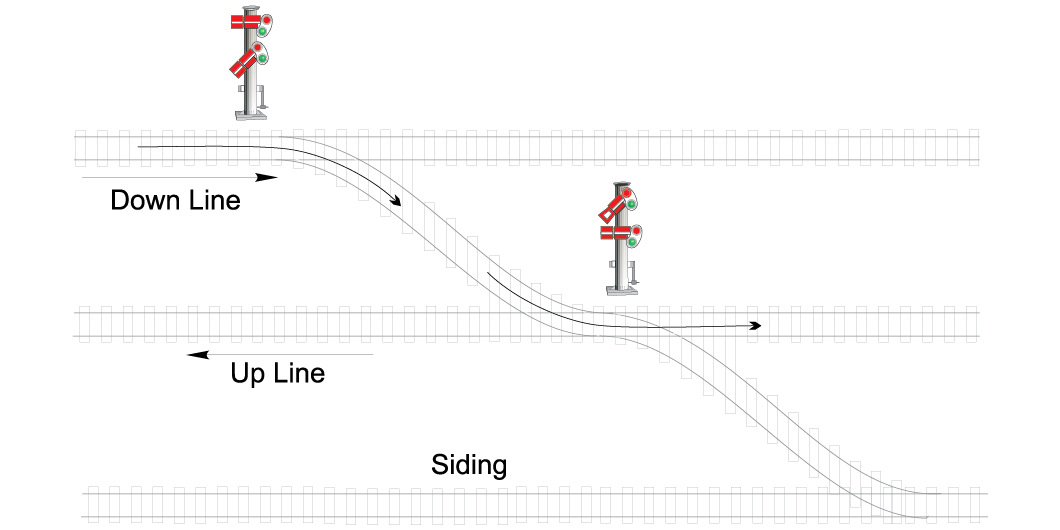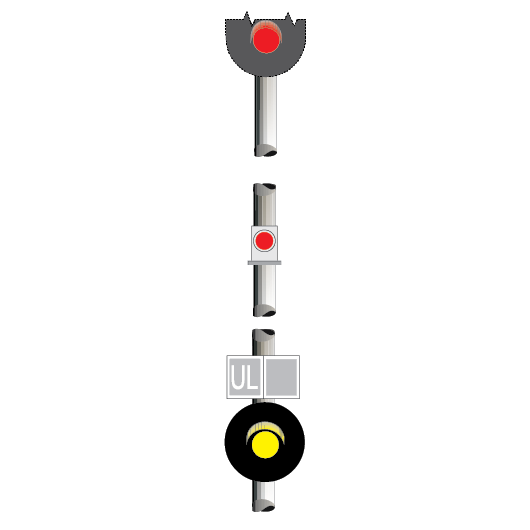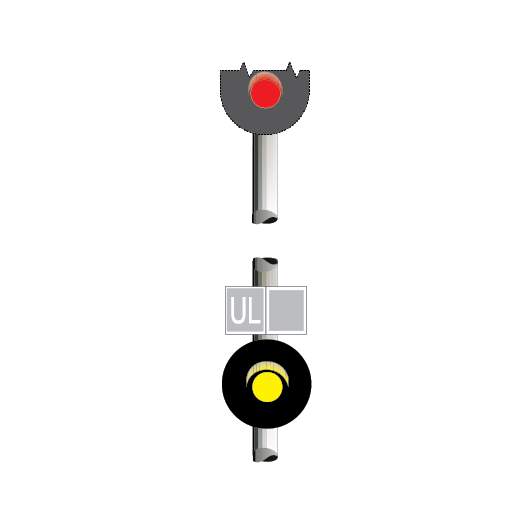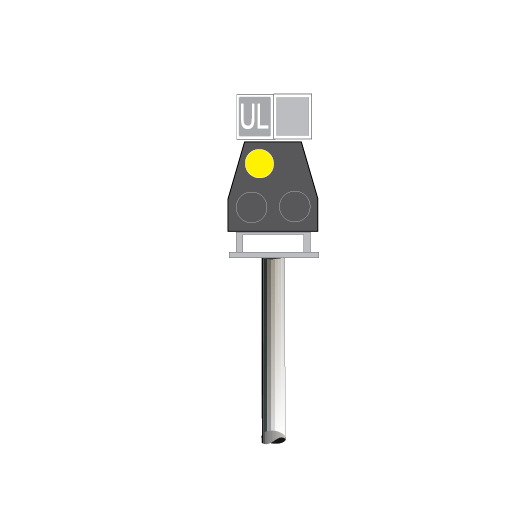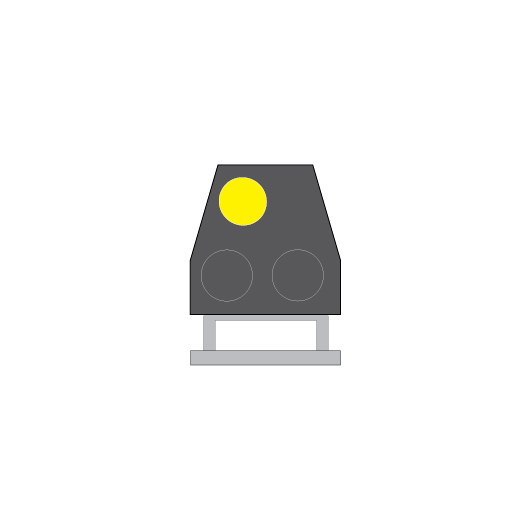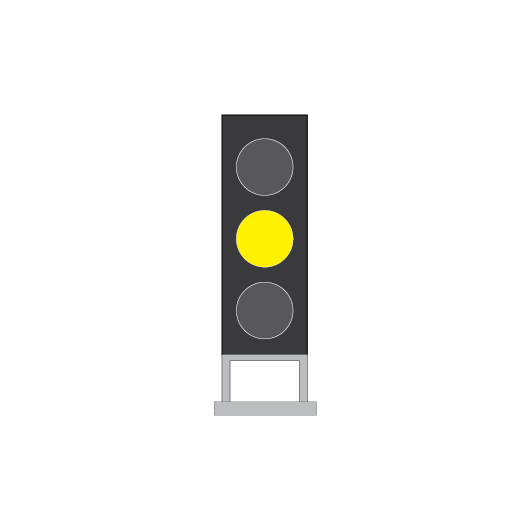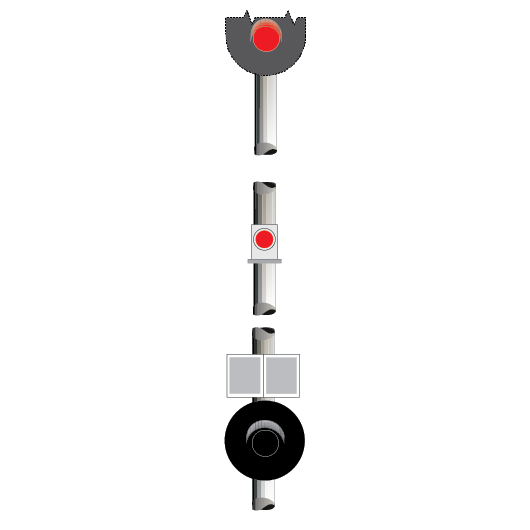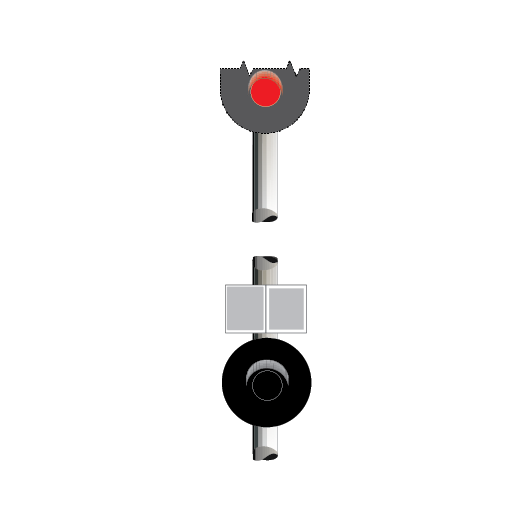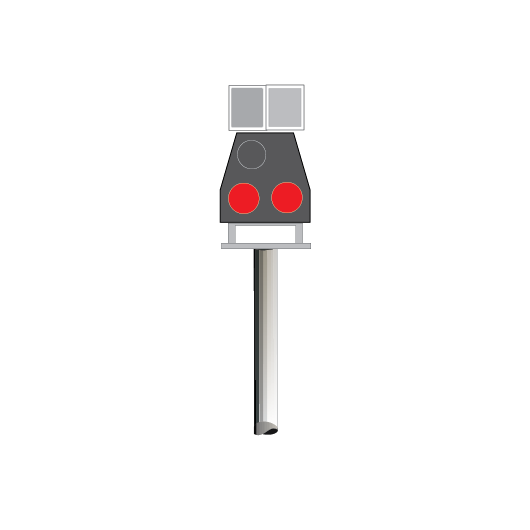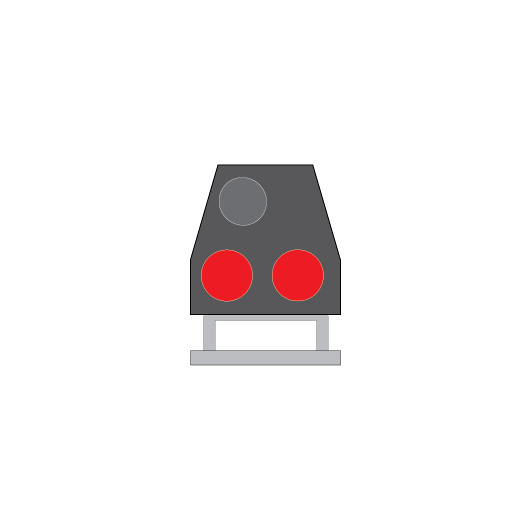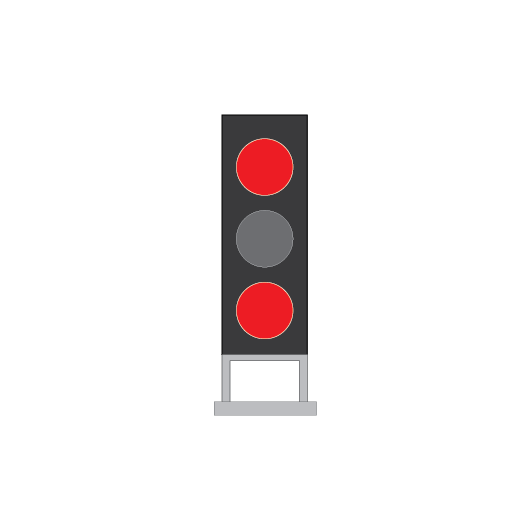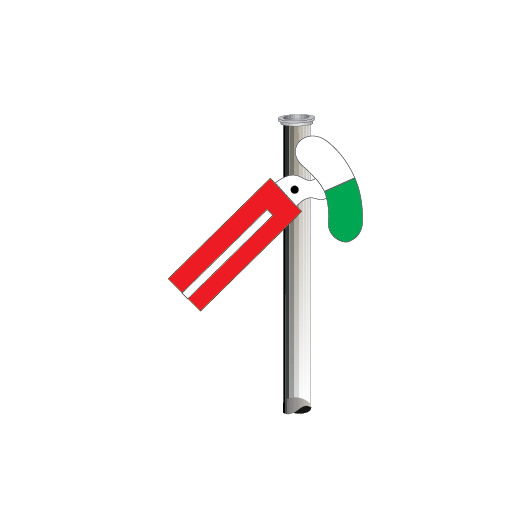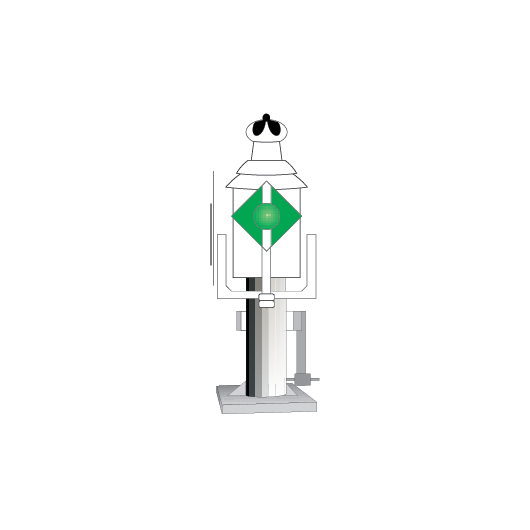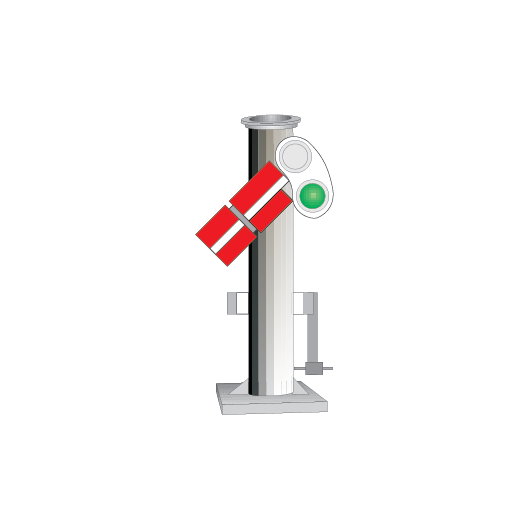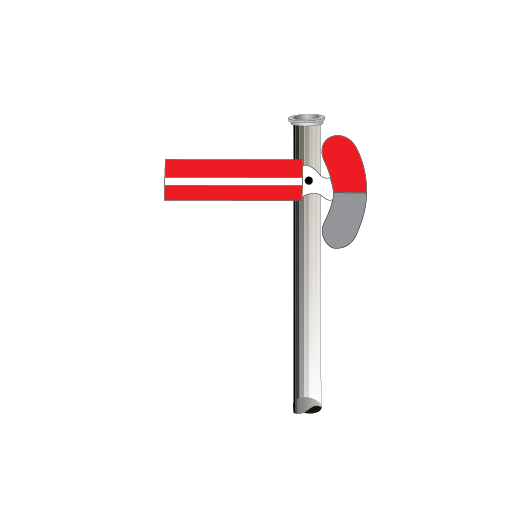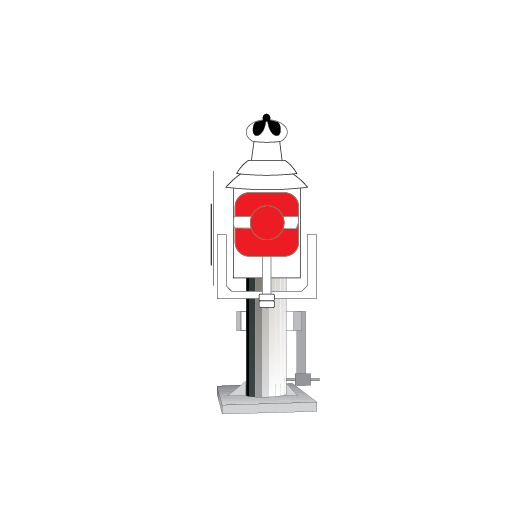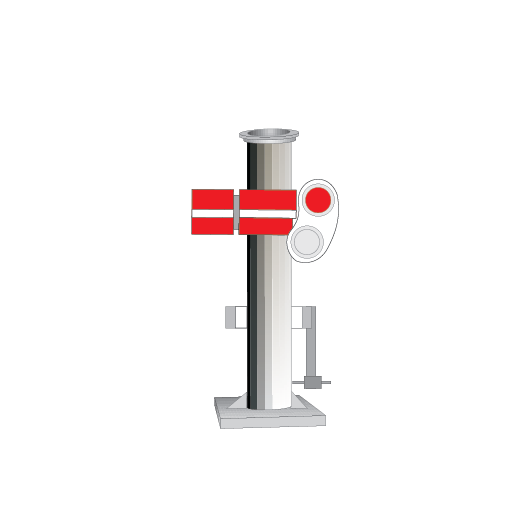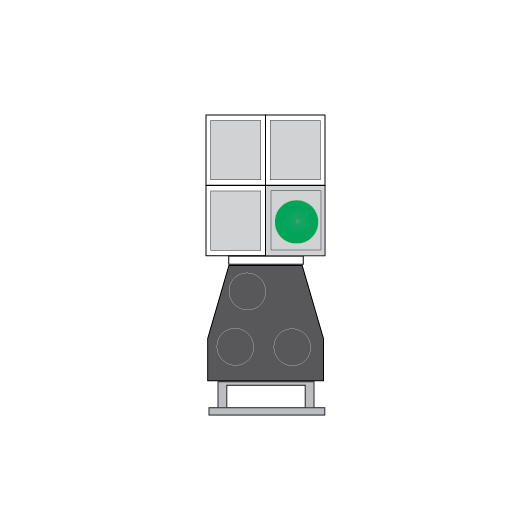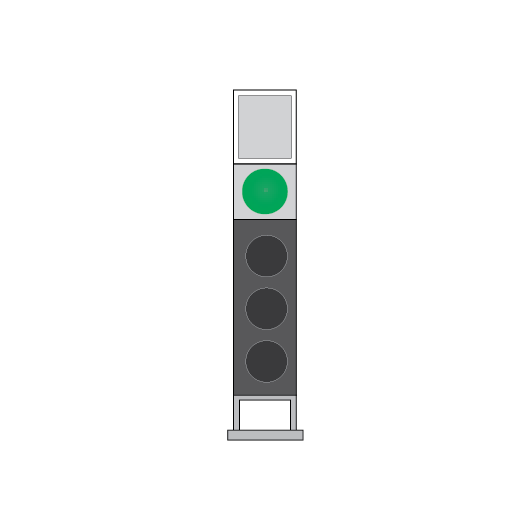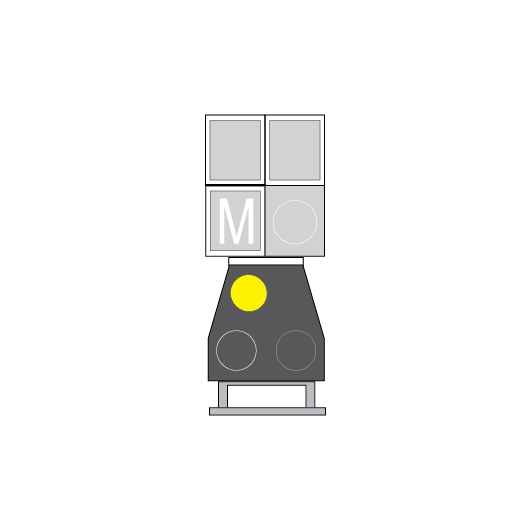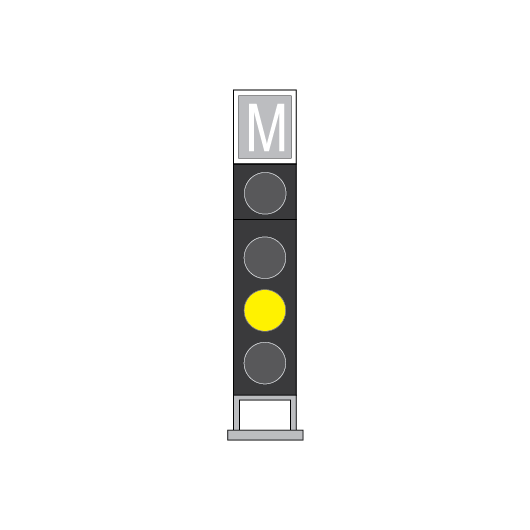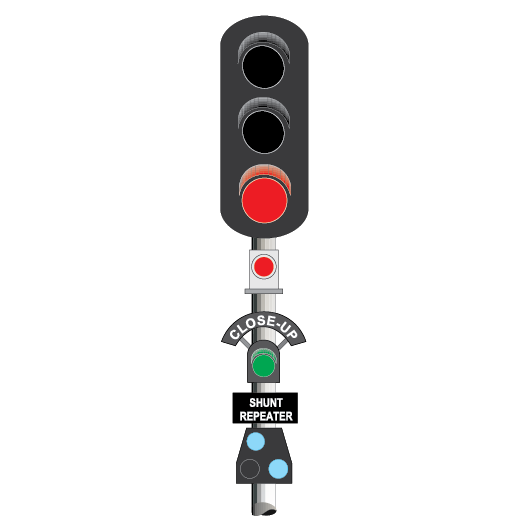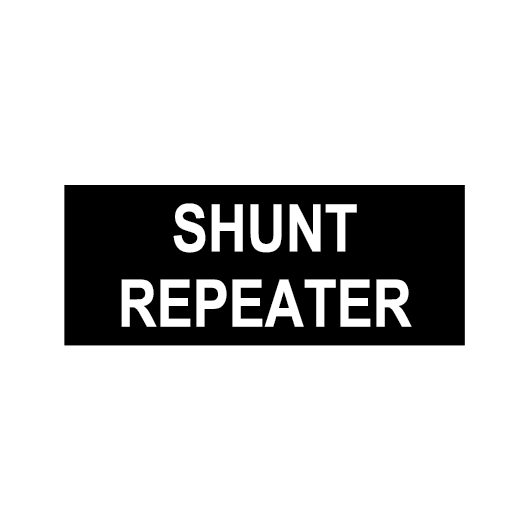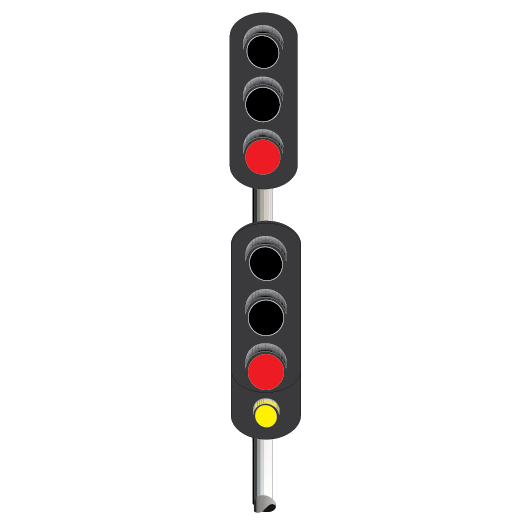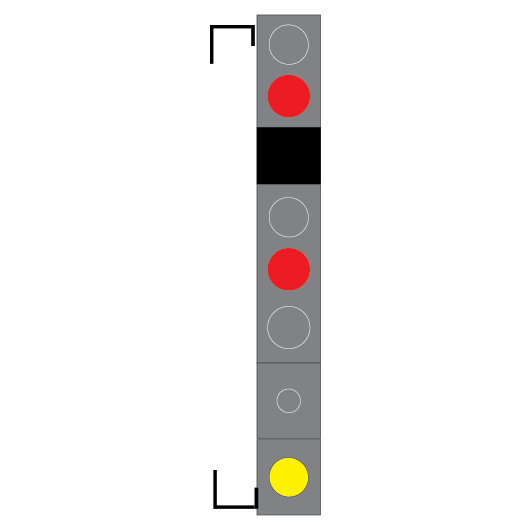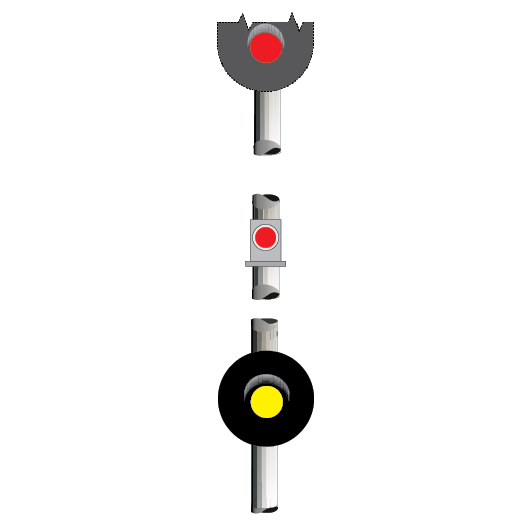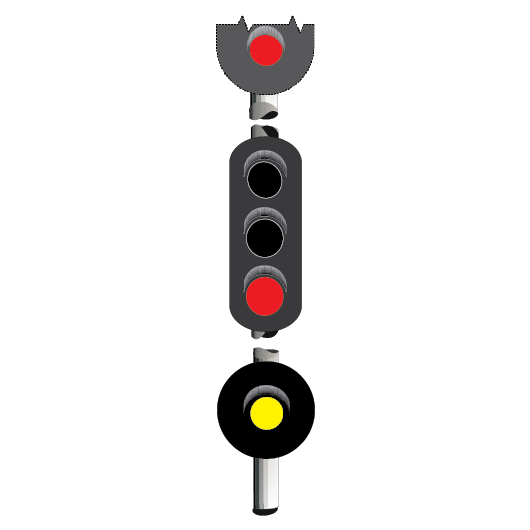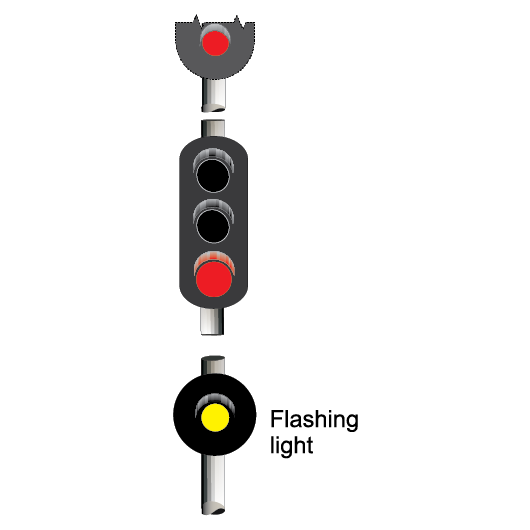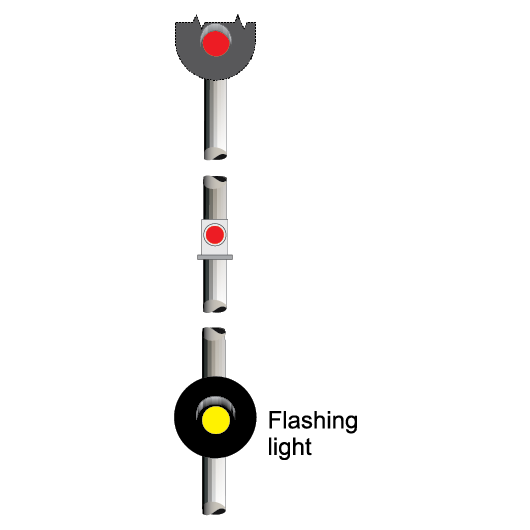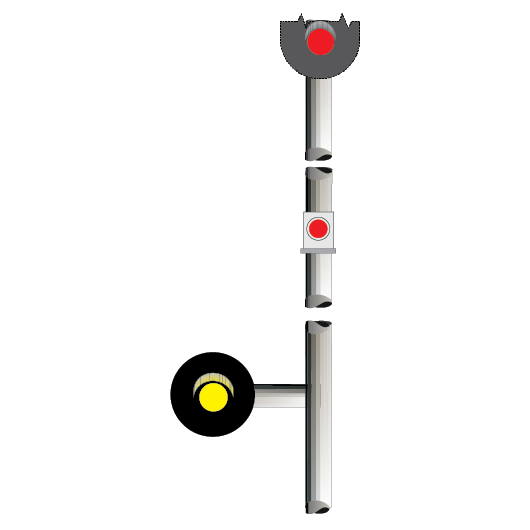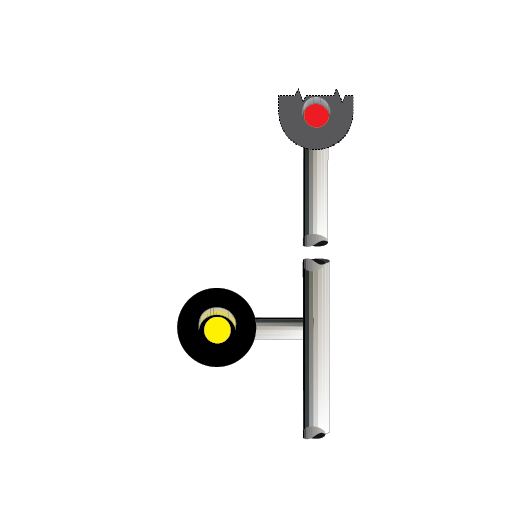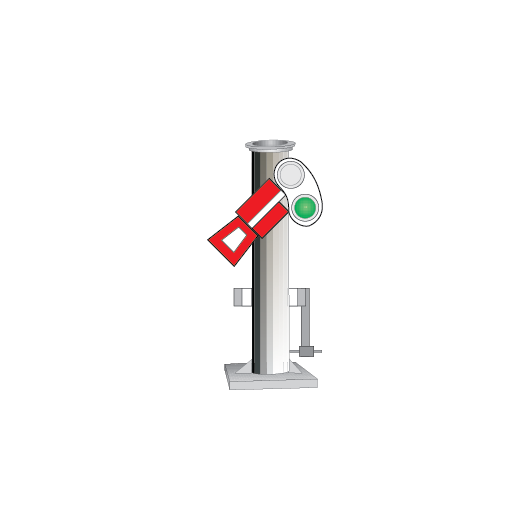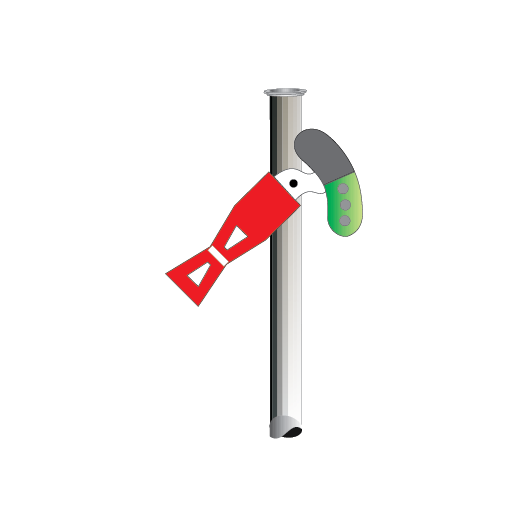Description
This document describes the types of shunting signals.
Not what you are looking for? See more NSG Rules
Purpose
To describe the types of shunting signals used in the Network.
Principle
Shunting signals are:
- controlled signals, operated by Signallers or other Qualified Workers, and
- used to authorise shunting movements.
Shunting signals must be passed only in accordance with NSG 606 Responding to signals and signs.
The Figures in this Rule show examples of the shunting signals used in the Network.
Route signalling
Colour light shunting signals
If a colour light shunting signal controls movements over more than one route, a route indicator is usually provided.
Route indicators are described in NSG 604 Indicators and signs.
Semaphore shunting signals
The front of a semaphore shunting signal arm is red, usually with a longitudinal (along its length) white stripe. The back of the arm is white, with a longitudinal black stripe.
Multiple semaphore shunting signals are usually mounted one above the other on the same post.
The highest signal on a signal post is for the leftmost route. The next signal down is for the route immediately to the right of the first route, and so on.
Subsidiary signals
If placed below running signals, small colour light or small semaphore signals are subsidiary signals.
If the subsidiary shunting signal displays PROCEED, the running signal displays STOP.
General purpose shunting signals
General purpose shunting signals are placed:
- beside running lines
- within shunting yards.
Shunting signals may be subsidiary signals and, when attached to home signals, may be referred to as calling on signals.
Intermediate shunting signals
Intermediate shunting signals are placed between two running signals, facing in the same direction as the running signals.
When the first running signal displays a PROCEED indication, the intermediate shunting signal displays PROCEED for the running movement.
An intermediate shunting signal may be used to authorise a shunting movement.
Shunt repeater signals
A SHUNT REPEATER sign designates a shunt repeater signal.
Shunt repeater signals:
- are placed as subsidiary signals below controlled running signals, and
- show that the shunting signal below the next running signal displays a PROCEED indication.
Calling on signals
Calling on signals:
- are fitted as subsidiary signals to home signals
- authorise a movement past the running signal
- indicate that the points in the route are locked, but do not indicate that the line ahead is clear.
Shunt ahead signals
Shunt ahead signals:
- are fitted as subsidiary signals to starting signals or home/starting signals
- authorise a shunting movement past that signal.
Shunt ahead signals must not be used as an authority to proceed through a section.
Dead end signals
Dead end signals:
- are fitted as a subsidiary signal to home or home/starting signals only
- are on brackets placed on the same side as the route for the authorised movement, usually a dead end siding
- authorise a shunting movement from the running line to a dead end siding
- may be used for movement from a running line to a yard or loop.
Wrong road signals
Wrong road signals authorise shunting movements to the limit of authority in the wrong running-direction.
